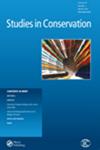改进收集护理的探索:涉及远源社区的参与性过程的机会
IF 0.8
4区 化学
0 ARCHAEOLOGY
引用次数: 0
摘要
摘要日内瓦民族志博物馆(MEG)在研究藏品或创建展览时,经常会邀请来源社区的艺术家和代表参与。与此同时,博物馆的保护部门越来越多地寻求以一种方式来照顾文物,这种方式不是基于文物获得时所分配的价值,而是根据使用或创造文物的社区所定义的地位,并在涉及到神圣或秘密文物时回应这些社区的要求。为了实现这一点,我们相信,只有让这些社区的代表参与进来,我们才能确定应该接受的具体护理对象。尽管MEG位于一个非殖民国家瑞士,但其收藏在很大程度上是殖民企业的成果,尽管如此,该国还是从中受益。虽然藏品包括来自相当多不同社区的物品,但MEG没有参与专门与赔偿相关的参与式方法。那么,我们如何确定这些高度多样化的藏品的需求,以及如何确定它们的护理优先级?这就提出了一个问题,即如果利益相关者的愿景不一定反映整个社区的愿景,那么他们有合法性来定义对象或藏品的需求。博物馆如何定义谁有合法性来回答它的问题?的确,博物馆本身是否具备评判他人合法性的合法性?一个折衷方案是接受不可能有一个解决方案,只有多种不断发展的解决方案,并且这些解决方案只有在尊重多种声音和促进藏品以及体验与藏品互动好处的利益相关者的福祉的意图的情况下才是可接受的。本文章由计算机程序翻译,如有差异,请以英文原文为准。
The Quest for Improved Collection Care: Opportunities for Participatory Processes Involving Distant Source Communities
ABSTRACT The Geneva Museum of Ethnography (MEG) often engages the participation of source-community artists and representatives when studying collections or creating exhibitions. At the same time, the museum's conservation department increasingly seeks to care for objects in a manner based not on the values assigned at the time of their acquisition, but according to their status as defined by the communities that used or created them, and to respond to those communities’ requests when it comes to sacred or secret objects. To achieve this, we believe that only a participatory approach involving these communities’ representatives will allow us to define the specific care objects should receive. Although the MEG is located in a non-colonizing country, Switzerland, its collection is largely the result of colonial enterprises from which the country nevertheless benefited. While the collection includes objects from a considerable number of different communities, the MEG is not engaged in participatory approaches specifically linked to reparation. How then do we ascertain the needs of such highly diverse collections and how do we define the priorities for their care? This raises the question of which stakeholders have the legitimacy to define an object’s or collection’s needs if their visions do not necessarily reflect those of an entire community. How can the museum define who has the legitimacy to answer its questions? Indeed, does the museum itself have the legitimacy to judge the legitimacy of others? One compromise is to accept that there can be no one solution, only a multiplicity of evolving solutions, and that these solutions are acceptable only insofar as they respect multiple voices and the intention to promote the collections’ wellbeing as well as that of the stakeholders who experience the benefit of interacting with those collections.
求助全文
通过发布文献求助,成功后即可免费获取论文全文。
去求助
来源期刊

Studies in Conservation
化学-分析化学
CiteScore
1.80
自引率
12.50%
发文量
73
审稿时长
>12 weeks
期刊介绍:
Studies in Conservation is the premier international peer-reviewed journal for the conservation of historic and artistic works. The intended readership includes the conservation professional in the broadest sense of the term: practising conservators of all types of object, conservation, heritage and museum scientists, collection or conservation managers, teachers and students of conservation, and academic researchers in the subject areas of arts, archaeology, the built heritage, materials history, art technological research and material culture.
Studies in Conservation publishes original work on a range of subjects including, but not limited to, examination methods for works of art, new research in the analysis of artistic materials, mechanisms of deterioration, advances in conservation practice, novel methods of treatment, conservation issues in display and storage, preventive conservation, issues of collection care, conservation history and ethics, and the history of materials and technological processes. Scientific content is not necessary, and the editors encourage the submission of practical articles, review papers, position papers on best practice and the philosophy and ethics of collecting and preservation, to help maintain the traditional balance of the journal. Whatever the subject matter, accounts of routine procedures are not accepted, except where these lead to results that are sufficiently novel and/or significant to be of general interest.
 求助内容:
求助内容: 应助结果提醒方式:
应助结果提醒方式:


